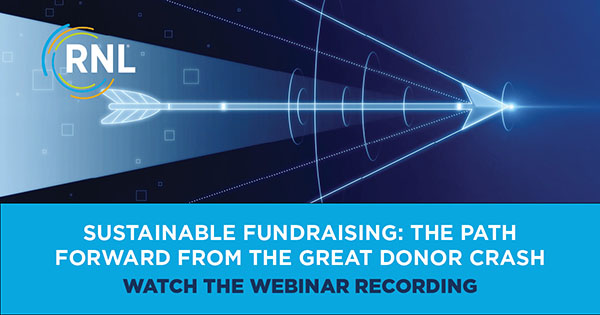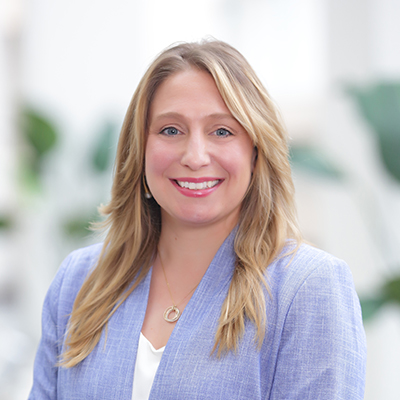fundraising
The Donor Crash of 2023 and the Path to Sustainable Fundraising

Fiscal 2023 is arguably our first year “back to normal” in higher ed fundraising. In-person donor events are back on the calendar, major gift officers are back on the road, students are back in the classroom, and the general academic and campus atmosphere seems much like it was four years ago.
What has not returned to normal is donor participation. There has been a higher education “donor crash” for the majority of institutions. The pandemic certainly played a big role in this downturn. It tested university and fundraising leadership in unprecedented ways, and those leaders had to make decisions quickly and with limited information. Some pressed forward, maintaining normal appeal cycles or even doubling down on calls for support to meet pressing needs. Those institutions saw record-breaking participation and response from donors. Many paused on solicitations instead, unsure whether they could ask donors to give in such an uncertain time. Those who let up have yet to fully recover—according to recent CASE data, 72 percent of universities are still below pre-pandemic donor counts.
Directors of annual giving are now throwing every trick in their books at the problem: socks, swag, access, membership, tickets, badges…everything they can think of to reverse the trend before it gets too far. These efforts are valiant and may be effective in the short term. To reverse the trend of donor decline in the long-term, we have to identify the real cause and commit to a different, sustainable donor engagement path.
What is really behind the higher education donor crash?
The great donor crash, like all recent bubbles that have burst, is complicated. While it was exacerbated by the pandemic, the root causes go back to decisions made years ago. Here are three factors that I believe contributed to the crash.
1. The pandemic effect
The pandemic caused a surge of giving fueled by a desire to help those in a dire need. Local food banks, shelters, and all types of nonprofits saw record giving to support those directly impacted by pandemic closures and health crises. Higher ed institutions saw this as well, receiving impressive support for student emergency campaigns, food pantries, funds to mitigate student housing insecurity, and other pressing needs. Donors also jumped on board to support institutions that were actively engaged in vaccine research and health system response.
However, all emergency-related fundraising experiences higher rates of donor attrition than annual campaigns. Those donors gave for a very specific reason and had no intention of giving annually. Standard donor stewardship and gift acknowledgment activities will not convert them into regular supporters—and one could argue that you shouldn’t even try.
Instead, anticipating higher rates of attrition from these urgent campaigns should be part of your strategic planning. Use data to optimize your allocation of staff time, energy, and resources in retaining those donors who are most likely to become long-term supporters. It’s crucial to use propensity modeling and to listen for donors who are clearly staying engaged after the gift.
2. Economic uncertainty
As the pandemic hit and people were stuck at home, discretionary spending declined dramatically. Interest rates were also at historic lows, real estate purchases were at a fever pitch, and Millennial wealth doubled during this heady time. All of these indicators contributed to increased giving.
Today, that economic landscape has shifted dramatically. Rising inflation, higher interest rates to combat it, and increases in the cost of living has caused discretionary spending to take a hit.
We have to recognize that consumer behavior is donor behavior. When we are talking about broad-based donor response, our results are going to be a lot like retail purchase trends. We will still have mega-givers as wealth continues to concentrate, but when the economy is cooling and inflation is up, it will be harder to get “participation.”
To build a base of supporters during a time of economic uncertainty, staying consistent in our communication with them is crucial. Emphasizing the social component of giving, the real impact of philanthropy, and making it truly easy to give are also crucial. We recently outlined the impact of these strategies in our review of donor response from over half a million donors in 2022.
What’s your best path to sustainable fundraising?
Let’s talk about how we can help you build a robust donor pipeline, engage the right donors at the right time, and chart a course to fundraising success year after year.
3. Not paying attention to the right populations
Large fundraising entities, and higher education in particular, have been riding a wave that began decades ago, when education was far more financially accessible and served as a guaranteed accelerator to personal prosperity. The value of that degree was without question, and alumni maintained a real sense of gratitude and loyalty to their institutions. Colleges and universities also had relatively few competitors for philanthropic dollars. Those circumstances created the environment for billion-dollar campaigns and impressive growth in mega-fundraising.
Today, that “Boomer” wave has officially broken on the shore. As we’ve largely overinvested our resources in the short-term objectives of converting rich, older donors, we’ve neglected to engage the next generation of major donors.
Millennials and Gen X make up more than one half of the U.S. living population. Ten thousand Boomers reach retirement age every day. $73 trillion in wealth is expected to transfer to the next generations in the coming two decades, with roughly 6 percent going to charity if historical trends hold. The children and grandchildren who receive this wealth (and are already growing their own) will hold massive influence on philanthropy.
However, higher education has not kept up with this rising tide of Millennial and Gen Z donors. The giving rate across higher education nationally is less than 8 percent for alumni less than 20 years out. Yet our research on young alumni giving shows that 81 percent of those same alumni prospects give to some charity every year. Institutions are converting on philanthropy with alumni at less than a one in ten rate.
Higher ed fundraising also excludes a diverse prospective donor community through its identification and qualification process. Wealth ratings are largely based on archaic measures like real estate and public holdings. Gift officer portfolios are based on this demographic data rather than the signals constituents are sending. Boards and advisory committees are also homogeneous, in part because they come from this same prospect pool.
Part of this is the incentives built into fundraising job descriptions. Senior leaders are encouraged to close the big gift and get their next job. They have zero concern for future pipeline at the organization they leave. When budgets need to be cut, the first places that get hit are annual giving and donor relations. That’s not shocking when the incentive is on big gifts now, but cutting back on engaging the donors needed to build a robust pipeline undermines your future fundraising.
The solution is to shift a portion of your budget, strategy, and performance incentives to long-term thinking. This shift needs to happen now because fundraising will be increasingly vital to institutional sustainability. Higher education is already experiencing the pain of a demographic cliff that will cause the most painful enrollment period in decades. Philanthropy will be expected to bridge the budget gap amidst this pain, and we’re only going to do it if we invest a substantial portion of our resources engaging the next generation of diverse and purposeful donors.
The answer to avoiding the next donor crash is sustainable fundraising strategy
The combination of these three factors are the likely cause of the higher education donor crash. Some of them are the reality of forces beyond our control that we need to account for in our planning. Some are the result of reactionary thinking, poor planning, and decision making that’s not founded on solid data and best practices. It’s time to rethink the business model of advancement and strengthen the future of giving. Smart and diversified investments in your pipeline today will help your institution avoid an even deeper crash in your donor base tomorrow.
If we only invest time, talent, energy, and resources in short-term gains, we will only yield short-term results. And we will likely eliminate the long-term sustainability of our institutions. The solution is sustainable investment across the donor pipeline.
Fundraising, after all, isn’t magic. It’s math. And we have the solution to the problem right in our hands.
Learn more about the path forward to sustainable fundraising
I’ll go even deeper into the topic of the higher education donor crash and the path forward in our webinar, Sustainable Fundraising: The Path Forward from the Great Donor Crash. We’ll look at the trends that led to this crash and explore strategies that will help you start to build that pipeline you will need for your future fundraising success. Watch the webinar now.
We are also ready to help you identify and implement the strategies that will lead to sustainable fundraising. Reach out and we will set up a complimentary consultation.

